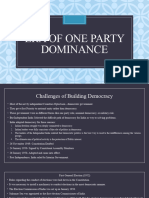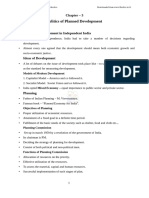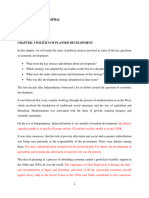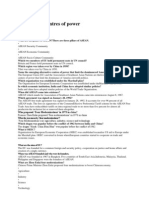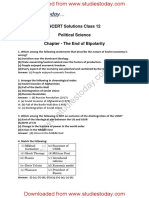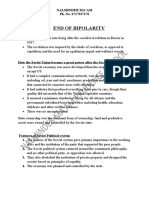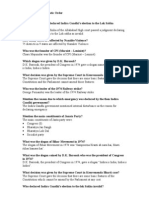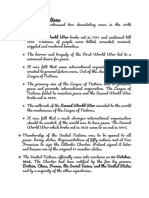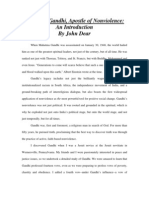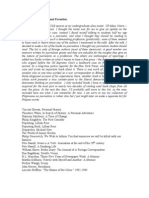0% found this document useful (0 votes)
1K views12 pagesIndia's External Relations
India pursued a foreign policy of non-alignment after independence, seeking to preserve its sovereignty and territorial integrity while remaining neutral in the Cold War. Prime Minister Nehru played a key role in establishing this policy and fostering unity with other newly independent Asian and African nations. However, tensions arose with China over territorial disputes and China's occupation of Tibet, culminating in a brief border war in 1962 that damaged India's international standing. The conflict also had domestic political impacts in India. While initially opposed to nuclear weapons, India maintained a civilian nuclear program with potential dual uses.
Uploaded by
Lee Jeong hyeonCopyright
© © All Rights Reserved
We take content rights seriously. If you suspect this is your content, claim it here.
Available Formats
Download as PDF, TXT or read online on Scribd
0% found this document useful (0 votes)
1K views12 pagesIndia's External Relations
India pursued a foreign policy of non-alignment after independence, seeking to preserve its sovereignty and territorial integrity while remaining neutral in the Cold War. Prime Minister Nehru played a key role in establishing this policy and fostering unity with other newly independent Asian and African nations. However, tensions arose with China over territorial disputes and China's occupation of Tibet, culminating in a brief border war in 1962 that damaged India's international standing. The conflict also had domestic political impacts in India. While initially opposed to nuclear weapons, India maintained a civilian nuclear program with potential dual uses.
Uploaded by
Lee Jeong hyeonCopyright
© © All Rights Reserved
We take content rights seriously. If you suspect this is your content, claim it here.
Available Formats
Download as PDF, TXT or read online on Scribd
/ 12

